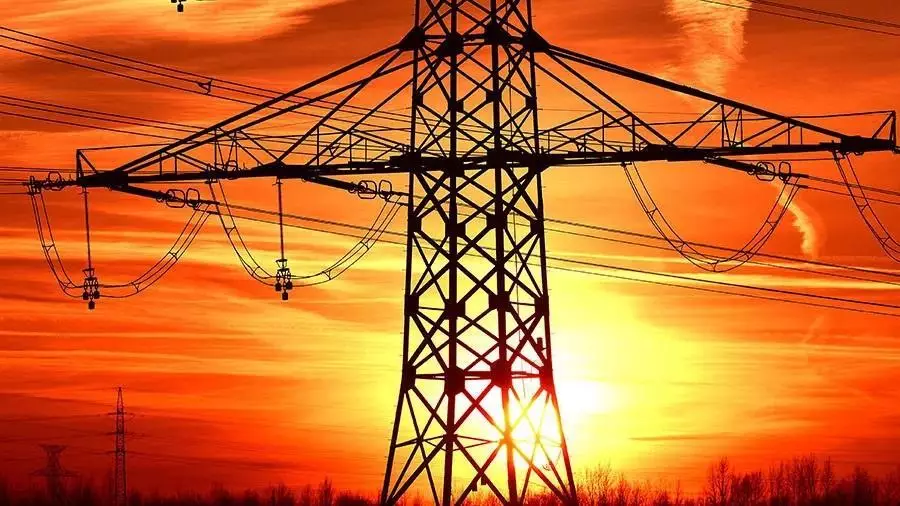Estimating how catastrophic climate change will be for the global economy has proven to be a historic challenge. But this summer, it’s increasingly evident just how quickly costs can build up.
Extreme heat and drought conditions are hitting the United States, Europe and China, compounding problems for workers and businesses at a time when economic growth is already slowing sharply and increasing pressure on prices.
In China’s Sichuan province, all factories were closed for six days to save energy. Ships carrying coal and chemicals are struggling to make their usual voyages along Germany’s Rhine River. And people living on the west coast of the United States have been asked to use less electricity as temperatures rise.
These events “have the ability to be quite significant for the specific regions affected,” said Ben May, director of global macro research at Oxford Economics.
The extent of pain may depend on how long the hot flashes and lack of rain last. But in countries like Germany, experts warn that there is little relief in sight and companies are bracing for the worst.
Extreme weather and economic slowdown
It’s not just the Rhine. Around the world, the rivers that support global growth — the Yangtze, Danube and Colorado — are drying up, impeding the movement of goods, disrupting irrigation systems and making it difficult to cool mills and factories.
At the same time, scorching heat is crippling transport networks, straining energy supplies and hampering worker productivity.
“We shouldn’t be surprised by heatwave events,” said Bob Ward, director of policy and communications at the Grantham Research Institute on Climate Change and the Environment at the London School of Economics.
“They are exactly what we predicted and are part of a trend: more frequent, more intense, all over the world.”
China is facing its fiercest heat wave in six decades, with temperatures topping 40 degrees Celsius (104 degrees Fahrenheit) in dozens of cities.
Parts of California could see temperatures as high as 109 degrees Fahrenheit this week. Earlier this summer, temperatures reached 40 degrees Celsius in the UK for the first time.
The global economy was already under pressure.
Europe is at high risk of recession as energy prices soar, spurred on by Russia’s invasion of Ukraine. High inflation and aggressive interest rate hikes by the Federal Reserve undermine growth in the United States. China is dealing with the fallout from severe coronavirus lockdowns and a housing crisis.
“Right now, we are at the most difficult point of economic stabilization,” Chinese Premier Li Keqiang said this week.
Another thing to worry about
Extreme weather could exacerbate “existing pinch points” along supply chains, one of the main reasons inflation has been difficult to bring down, said May of Oxford Economics.
China’s Sichuan province, where factories closed production this week, is a hub for semiconductor and solar panel makers. Power rationing will hit factories owned by some of the world’s biggest electronics companies, including Apple supplier Foxconn and Intel.
The province is also the epicenter of China’s lithium mining industry. The downtime could increase the cost of raw material, which is a key component in electric car batteries.
The neighboring city of Chongqing, which sits at the confluence of the Yangtze and Jialing rivers, also ordered factories to suspend operations for a week until next Wednesday to save electricity, state media The Paper reported.
Forecasts for China’s economy this year are already being downgraded as a result. Analysts at Nomura cut their 2022 forecast for GDP growth to 2.8% on Thursday – far below the government’s 5.5% target – while Goldman Sachs lowered its forecast to 3%.
Meanwhile, the shrinking Rhine in Germany has fallen below a critical level, blocking the flow of ships.
The river is a crucial conduit for chemicals and grains, as well as commodities — including coal, which is in high demand as the country races to fill storage facilities with natural gas before winter.
Finding alternative forms of transport is difficult due to labor shortages.
“It is only a matter of time before factories in the chemical or steel industry are closed, mineral oils and building materials do not reach their destination or transport of large volumes and heavy loads can no longer be carried out”, Holger Lösch, deputy -chairman director of the Federation of German Industries, said in a statement this week.
Low water levels along the Rhine cut about 0.3 percentage point off Germany’s economic output in 2018, according to Carsten Brzeski, ING’s global head of macro.
But in this case, low water wasn’t an issue until late September. This time, it could reduce GDP by at least 0.5 percentage point in the second half of this year, he estimated.
Economic sentiment in Germany continued to decline in August, according to data released this week. Brzeski said the country “would need an economic miracle” to avoid falling into recession in the coming months.
In the American West, an extraordinary drought is draining the country’s largest reservoirs, forcing the federal government to implement further mandatory water cuts. It is also forcing farmers to destroy crops.
Nearly three-quarters of US farmers say this year’s drought is hurting their crops — with significant crop and income losses, according to a survey by the American Farm Bureau Federation, an insurance company and lobby group that represents agricultural interests.
The survey was conducted in 15 states from June 8 to July 20 in extreme drought regions from Texas to North Dakota and California, which account for nearly half of the country’s agricultural production value.
In California – a state with high fruit and nut harvests – 50% of farmers said they had to remove trees and multi-year crops due to drought, which will affect future income.
Without significant investment in infrastructure modernization, costs will continue to rise, noted Ward of the London School of Economics. And the impact may not be incremental.
“There are signs that these heat episodes are not just becoming a little more intense and frequent over time. It’s happening in a non-gradual way, and that will make it difficult to adapt,” Ward said.
— Laura He, Shawn Deng, Simone McCarthy, Benjamin Brown, Aya Elamroussi, Taylor Romine, and Vanessa Yurkevich contributed reporting.
Source: CNN Brasil
I am Sophia william, author of World Stock Market. I have a degree in journalism from the University of Missouri and I have worked as a reporter for several news websites. I have a passion for writing and informing people about the latest news and events happening in the world. I strive to be accurate and unbiased in my reporting, and I hope to provide readers with valuable information that they can use to make informed decisions.






